Photo
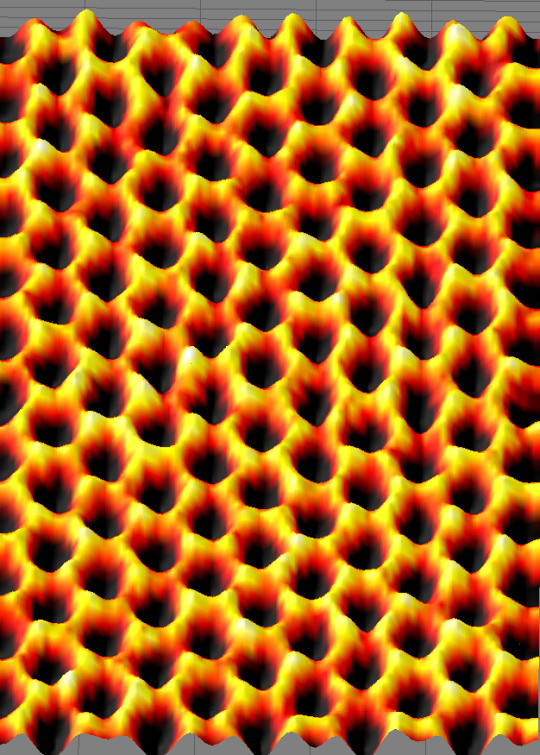
A single sheet of Graphene
This is the image of a single sheet of Graphene taken with a transmission electron microscope. Glorified in the image are the individual carbon atoms (yellow) on the honeycomb lattice.
For reference: The thickness of single layer graphene is ~0.345 nm !
Credit: Image courtesy of DOE/Lawrence Berkeley National Laboratory
311 notes
·
View notes
Link
A collaboration of engineers and researchers has found a way to prevent helium, a byproduct of the fusion reaction, from weakening nuclear fusion reactors.
The secret is in building the reactors using nanocomposite solids that create channels through which the helium can escape.
Researchers from Texas A&M University, working with a team from the Los Alamos National Laboratory in New Mexico, have tested a new method for creating the materials used in nuclear fusion reactors and found that it could eliminate one of the obstacles preventing humanity from harnessing the power of fusion energy.
Continue Reading.
295 notes
·
View notes
Link
A collaboration of engineers and researchers has found a way to prevent helium, a byproduct of the fusion reaction, from weakening nuclear fusion reactors.
The secret is in building the reactors using nanocomposite solids that create channels through which the helium can escape.
Researchers from Texas A&M University, working with a team from the Los Alamos National Laboratory in New Mexico, have tested a new method for creating the materials used in nuclear fusion reactors and found that it could eliminate one of the obstacles preventing humanity from harnessing the power of fusion energy.
Continue Reading.
295 notes
·
View notes
Video
youtube
Part of what makes metals like gold and silver so attractive is their shininess. Why do they shine in the first place?
44 notes
·
View notes
Photo

How does this sand act like it’s a liquid? Physics Girl recreates this newly popular experiment.
youtube
155 notes
·
View notes
Text
Ink from ancient Egyptian papyri contains copper

Until recently, it was assumed that the ink used for writing was primarily carbon-based at least until the fourth and fifth centuries AD. But in a new University of Copenhagen study, analyses of 2,000-year-old papyri fragments with X-ray microscopy show that black ink used by Egyptian scribes also contained copper - an element previously not identified in ancient ink.
In a study published today in Scientific Reports, a cross-disciplinary team of researchers show that Egyptians used carbon inks that contained copper, which has not been identified in ancient ink before. Although the analysed papyri fragments were written over a period of 300 years and from different geographical regions, the results did not vary significantly:
The papyri fragments were investigated with advanced synchrotron radiation based X-ray microscopy equipment at the European Synchrotron Radiation Facility in Grenoble as part of the cross-disciplinary CoNext project, and the particles found in the inks indicate that they were by-products of the extraction of copper from sulphurous ores. Read more.
278 notes
·
View notes
Video
youtube
Thanks to chemical synthesis, we no longer have to make do with natural pigments and dyes to color our world.
107 notes
·
View notes
Photo

The Extraordinary Core of a Neutron Star
Lucy Reading-Ikkanda/Quanta Magazine; Source: Feryal Özel
717 notes
·
View notes
Photo
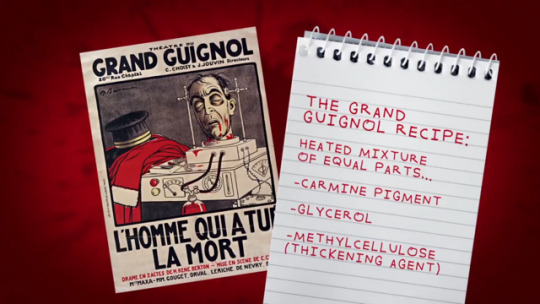


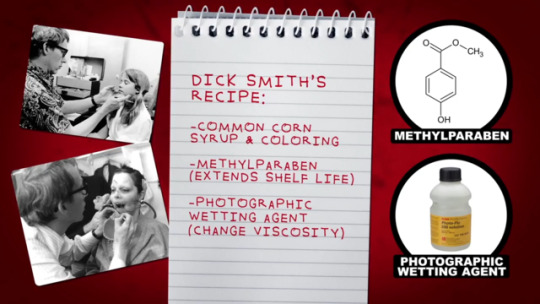
Here is the chemistry of every classic horror movie’s most crucial element: FAKE BLOOD.
youtube
65 notes
·
View notes
Photo
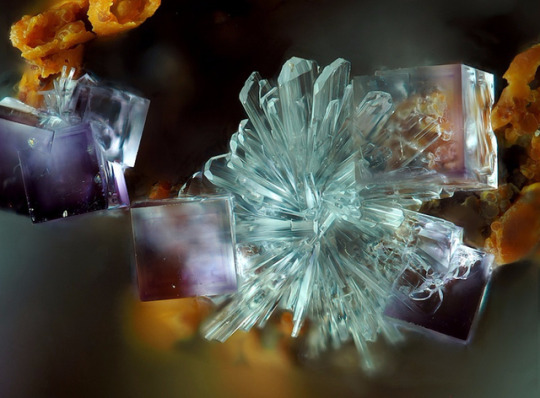
Fluorite, Hemimorphite
CaF2, Zn4Si2O7(OH)2·H2O
Locality:
Hidden Treasure Mine (Sacramento; Chicago), Ophir Hill area, Ophir District, Oquirrh Mts, Tooele Co., Utah, USA
Field of View: 1.1 mm
An impressive configuration of Fluorite and Hemimorphite.
Pierre Clolus’ Photo
686 notes
·
View notes
Video
Plankton as ancient climate recorders
Climate changes from millions of years ago are recorded at daily rates in ancient sea shells, new research shows. A synchrotron X-ray microscope has revealed growth bands in plankton shells that show how shell chemistry records the sea temperature.
Keep reading
105 notes
·
View notes
Photo
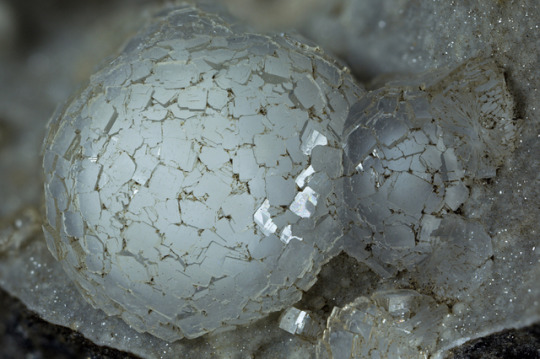
Thomsonite-Ca
NaCa2(Al5Si5)O20·6H2O
Locality:
Pustý Vrch (Schichenberg), Folknáře, Děčín, Ústí Region, Bohemia, Czech Republic
A Nice aggregate of Thomsonite-Ca up to 8 mm.
Bohuslav Bures’ Photo
Thomsonite is a common zeolite, forming series, with the mineral species being named Thomsonite-Ca and Thomsonite-Sr. Thomsonite-Ca, by far the more common of the two. Found within fractures in igneous rocks, typically basalts as well as in contact metamorphosed rocks, alkalic igneous rocks, subvolcanic rocks, and occasionally as a cement on sandstones. Thomsonite is pyroelectric, meaning it can generate a charge temporarily when heated.
176 notes
·
View notes
Video
vimeo
Another clip in the recent Magic of Chemistry collection shows a number of geologic-type processes, including acid-base reactions, minerals dissolving and reacting with water, and a variety of things burning.
This collection of Envisioning Chemistry includes 5 films:
1. Getting Hot (with Thermal Imaging)
2. Everyday Fire (in Slow Motion)
3. Disappearing Metals (Aluminum, Magnesium, Copper, Lithium, Sodium, Potassium)
4. Elemental Burning (Carbon, Sodium, Phosphorus, Magnesium, Sulfur)
5. Elemental Burning II (Lithium, Hydrogen, Iron, Potassium)
For more films and text descriptions: please visit envisioningchemistry.com
77 notes
·
View notes
Photo

Chrysocolla
(Cu2-xAlx)H2-xSi2O5(OH)4·nH2O
Locality:
Tripoli Mine (Andrés Mine), Del Cura Ravine, Huércal de Almería, Almería, Andalusia, Spain
Field of View: 4 mm
Chrysocolla pseudomorphs after Azurite.
Collection and photo Jose Miguel Sola Fdez.
Chrysocolla is a hydrated copper phyllosilicate mineral. It is of secondary origin and forms in the oxidation zones of copper ore bodies. Associated minerals are quartz, limonite, azurite, malachite, cuprite, and other secondary copper minerals.It is typically found as botryoidal or rounded masses and crusts, or vein fillings. Because of its light color, it is sometimes confused with turquoise. Chrysocolla has a cyan (blue-green) color and is a minor ore of copper, having a hardness of 2.5 to 3.5. The name comes from the Ancient Greek: χρυσός κολλα (chrysos kolla), “gold glue”, in allusion to the name of the material used to solder gold, and was first used by Theophrastus in 315 BCE.
196 notes
·
View notes
Photo
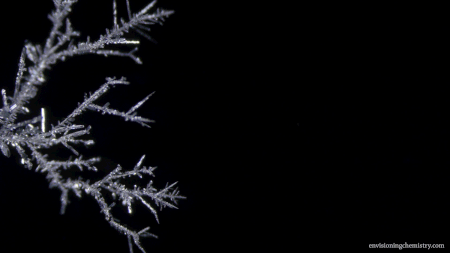
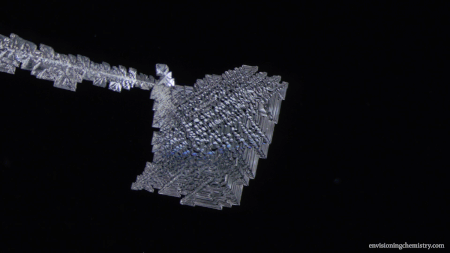

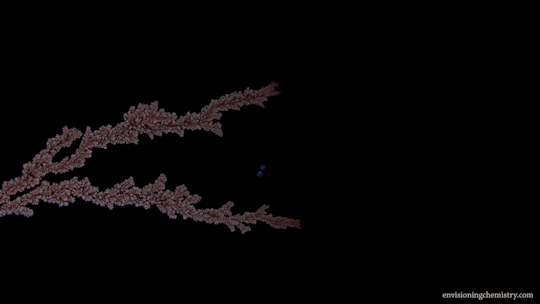

Electrodeposition
If you think you know what metals look like, well, think again! During electrodeposition, metal cations in a solution get reduced at the electrode connected to the negative terminal of a power supply. This reduction generates Intriguing metal structures. Here, the electrodeposition of 5 different metals (copper, tin, zinc, lead, and silver) was recorded under a microscope.
Images by Wenting Zhu.
This photo is reproduced with permission from Beauty of Science.
Do science. Take pictures. Win money. Enter our photo contest here.
212 notes
·
View notes
Photo
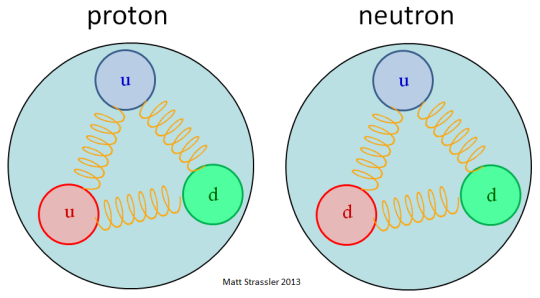
What are Quarks?
A quark is a type of elementary particle and a fundamental constituent of matter. Quarks combine to form composite particles called hadrons, the most stable of which are protons and neutrons, the components of atomic nuclei.
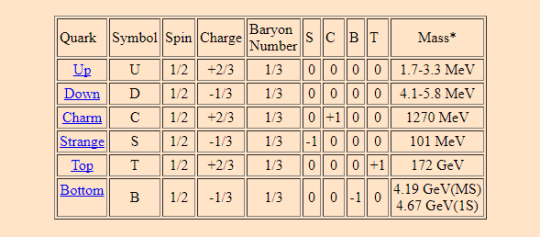
There are six types of quarks, known as flavors: up, down, strange, charm, top, and bottom Up and down quarks have the lowest masses of all quarks. The heavier quarks rapidly change into up and down quarks through a process of particle decay: the transformation from a higher mass state to a lower mass state. Because of this, up and down quarks are generally stable and the most common in the universe, whereas strange, charm, bottom, and top quarks can only be produced in high energy collisions (such as those involving cosmic rays and in particle accelerators).
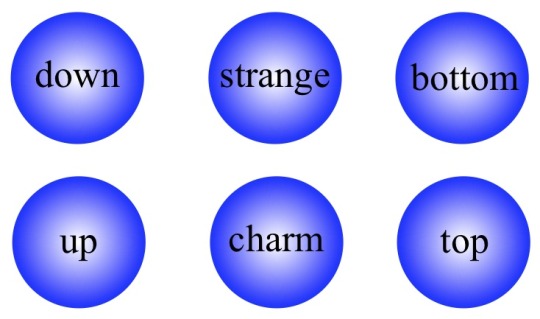
Due to a phenomenon known as color confinement, quarks are never directly observed or found in isolation; they can be found only within hadrons, such as baryons (of which protons and neutrons are examples) and mesons. For this reason, much of what is known about quarks has been drawn from observations of the hadrons themselves.
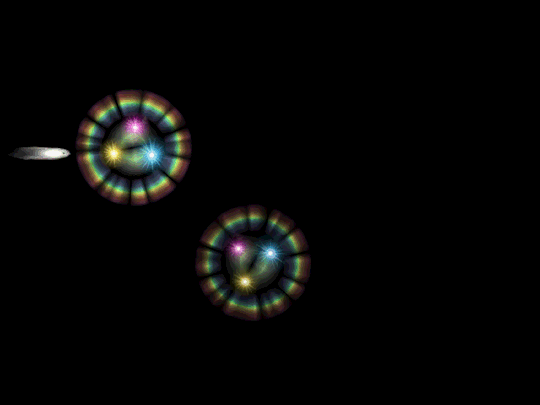
This movie illustrates the action inside the nucleus of a deuterium atom containing a proton and a neutron, each with three quarks. An electron strikes a quark inside a proton, passing energy to the quark before the electron bounces back. The quark now has so much energy “stuffed” into it, it creates a cascade of new particles as it flies out of the proton. The result is two new, two-quark particles.
Quarks have various intrinsic properties, including electric charge, mass, color charge, and spin. Quarks are the only elementary particles in the Standard Model of particle physics to experience all four fundamental interactions, also known as fundamental forces (electromagnetism, gravitation, strong interaction, and weak interaction), as well as the only known particles whose electric charges are not integer multiples of the elementary charge.
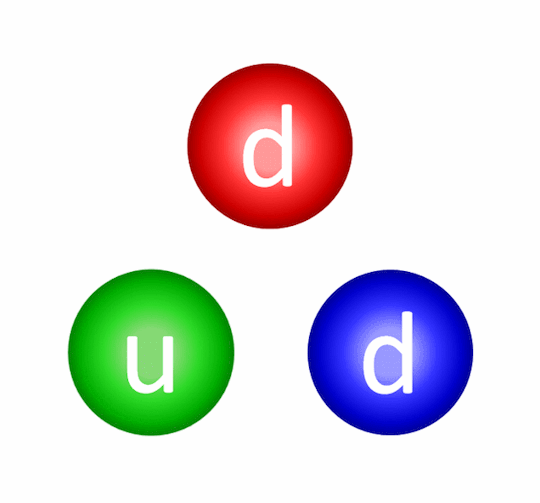
An animation of the interaction inside a neutron. The gluons are represented as circles with the color charge in the center and the anti-color charge on the outside.
Mass
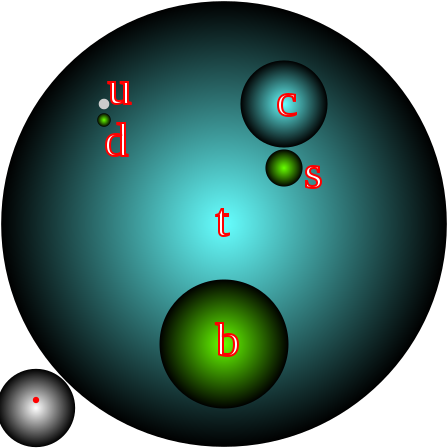
Current quark masses for all six flavors in comparison, as balls of proportional volumes. Proton and electron (red) are shown in bottom left corner for scale.
Two terms are used in referring to a quark’s mass: current quark mass refers to the mass of a quark by itself, while constituent quark massrefers to the current quark mass plus the mass of the gluon particle field surrounding the quark. These masses typically have very different values. Most of a hadron’s mass comes from the gluons that bind the constituent quarks together, rather than from the quarks themselves.
Field lines from color charges

In quantum chromodynamics, a quark’s color can take one of three values or charges, red, green, and blue. An antiquark can take one of three anticolors, called antired, antigreen, and antiblue (represented as cyan, magenta and yellow, respectively). Gluons are mixtures of two colors, such as red and antigreen, which constitutes their color charge. QCD considers eight gluons of the possible nine color–anticolor combinations to be unique.
Spin

In quantum mechanics and particle physics, spin is an intrinsic form of angular momentum carried by elementary particles, composite particles (hadrons), and atomic nuclei.
Spin is one of two types of angular momentum in quantum mechanics, the other being orbital angular momentum. The orbital angular momentum operator is the quantum-mechanical counterpart to the classical angular momentum of orbital revolution: it arises when a particle executes a rotating or twisting trajectory (such as when an electron orbits a nucleus)
Gluon

A gluon is an elementary particle that acts as the exchange particle (or gauge boson) for the strong force between quarks. It is analogous to the exchange of photons in the electromagnetic force between two charged particles. In layman’s terms, they “glue” quarks together, forming protons and neutrons.
Baryons and Mesons

A baryon is a composite subatomic particle made up of three quarks. Baryons and mesons belong to the hadron family of particles, which are the quark-based particles. As quark-based particles, baryons participate in the strong interaction, whereas leptons, which are not quark-based, do not.
In particle physics, mesons are hadronic subatomic particles composed of one quark and one antiquark, bound together by the strong interaction. Because mesons are composed of quark sub-particles, they have a physical size, with a diameter of roughly one femtometer, which is about 2⁄3 the size of a proton or neutron. All mesons are unstable, with the longest-lived lasting for only a few hundredths of a microsecond. Charged mesons decay (sometimes through mediating particles) to form electronsand neutrinos. Uncharged mesons may decay to photons. Both of these decays imply that color is no longer a property of the byproducts.
Source: wikipedia, hyperphysics (To know more click the links: Baryon, Meson, Gluon) Images: x, x, x, x, x
4K notes
·
View notes
Photo

Chrysocolla
(Cu2-xAlx)H2-xSi2O5(OH)4·nH2O
Locality:
Tripoli Mine (Andrés Mine), Del Cura Ravine, Huércal de Almería, Almería, Andalusia, Spain
Field of View: 4 mm
Chrysocolla pseudomorphs after Azurite.
Collection and photo Jose Miguel Sola Fdez.
Chrysocolla is a hydrated copper phyllosilicate mineral. It is of secondary origin and forms in the oxidation zones of copper ore bodies. Associated minerals are quartz, limonite, azurite, malachite, cuprite, and other secondary copper minerals.It is typically found as botryoidal or rounded masses and crusts, or vein fillings. Because of its light color, it is sometimes confused with turquoise. Chrysocolla has a cyan (blue-green) color and is a minor ore of copper, having a hardness of 2.5 to 3.5. The name comes from the Ancient Greek: χρυσός κολλα (chrysos kolla), “gold glue”, in allusion to the name of the material used to solder gold, and was first used by Theophrastus in 315 BCE.
196 notes
·
View notes